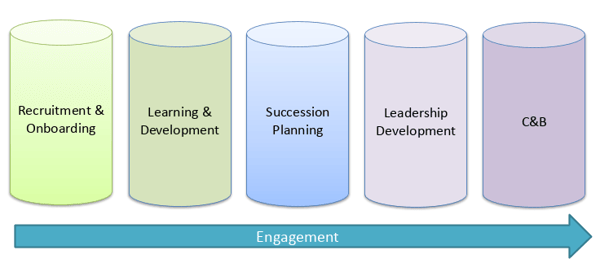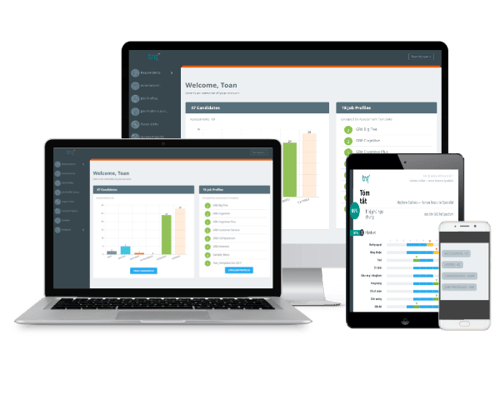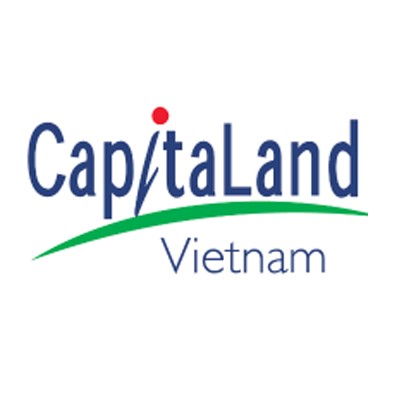What makes up an organisation, besides its products and services, is the employees that do everything within their capabilities to deliver such products and services to the clients and to meet the business’ goals.
There are many aspects to a talent/ employee that we have to take into account, from the time he/she thinks of applying for your company to when the individual has to go through the actual process of interviewing, onboarding, retaining, rewarding, and so on.
Overseeing the entire human capital of an organisation is an overwhelming task. Therefore, this requires the HR personnel to fully understand what makes up the talent management process to come up with a suitable strategy utilising the tools and technologies currently available.
The graph below details the areas of responsibilities that any proper HR department has to encompass.

The ability to obtain and adequately plan out all five activities will enable the HR personnel, managers and leaders to achieve the maximum level of employee engagement, which will ultimately increase the retention rate and decrease expense spends on hiring.
The economic growth in the South East Asia region is expected to increase slightly throughout the year, and the unemployment rate also starts to show sign of declining.
The results in a recent study conducted by Jobstreet on the job outlook for the South East Asia region revealed that the majority of the participants has the intention to recruit more people. However, at the same time, the employers expressed the difficulty in acquiring quality candidates. Finding talents to fill upper management positions is another challenge.
Companies are also facing the crisis of losing quality talents if they keep relying on the traditional method of attracting talents. The modern candidates want more than just a competitive salary package; they want to know if their future employers are as good as what they promise.
The majority of job interviews are unstructured, open-ended with no standardised questions. The results from these interviews tend to be bias and subjective to the interviewer's judgement.
It is also challenging to predict the candidate's performance. Despite the recruiters, and even the managers, believe they are good at evaluating others, our cognitive biases (a “brain flaw” we have when we process information or make a judgment) can hinder our ability to make fair and accurate decisions.
Nevertheless, unstructured interviews remain popular and are the HR personnel's "best friend" due to many reasons. There are certainly better alternatives to traditional job interviews that the organisation and the HR department should consider, such as pre-hire assessments, Job Fit solution, or psychometric assessments, to name a few.
Further reading:
Candidates these days are getting more and more selective when it comes to job seeking. With just a few mouse clicks, your potential top performers, a.k.a. the candidate, will be able to acquire any bit of information about your company. Indeed, modern candidates do not blindly apply for any job ad they see.
Thus, amidst today's war for the best talents, companies present themselves as a "product" and put in heaps of effort in attracting new people. Playing a vital role in this process of branding is the candidate experience - how you, the employer, make a positive, lasting impression on the job seeker's mind.
For a candidate to have a good perception of the interviewer/ the brand/ the potential employer, organisations need to be aware of the ideal candidate persona that they are aiming for and their candidate journey to maximise your effort of reaching them, and put in extra effort to make the candidate experience more "humanise".
A strong and positive company culture acts as a robust foundation to build an employer brand. Having a positive company culture can also differentiate your organisation from the rest and can also help you win top talents.
Building and retaining a company culture will act as a guideline for you to build your employer brand. As digital transformation is becoming the mantra of today's business, it is worth to remember that more than an upgrade of your IT system, digital transformation is also a cultural change.
What does this mean to the HR department? It means your HR personnel can now also experience emerging technologies, such as Artificial Intelligence, machine learning or Big Data to improve various aspects of talent management.
However, there are particular challenges that come with implementing advanced digital tools in day-to-day HR activities:
Further reading:
Occupying approximately 35% of the global workforce and still on the rise each and every year, it's the Millennials - the generation of those whose coming of age is at the beginning of this new millennium. A portion of Millennials are currently well reside in leadership roles.
In recent years, organisations once again witness a new crop of young talents, those who were born after 1995. We call them Generation Z. Just like how employers react when Millennials first started working, Gen Z also requires extra attention, particularly how they think, and what motivates them.
For more detailed information about Generation Z, please refer to this article.
The multi-generational workforce is not a challenge. Despite being a bit difficult to satisfy every age group, this still brings about tons of added values, especially when fresh graduates are starting to sprout up in every corner of the office.
As long as you have (a) the right talents, (b) suitable development plans for each generation, and (c) a well-developed succession plan in place, you would feel almost at ease.
Further reading:
Today, talent management goes beyond your regular management of the current talent pool; it involves the resolutions to all of the above issues.
Seeing this as an opportunity, many software providers have continuously introduced talent management solutions to lighten the recruiter’s workload while at the same time, increase the hiring success rate. Furthermore, there are always solutions for your employee-related issues at any phase of the employee lifecycle.
A suitable talent management solution for your company's specific situation can help your struggling HR team with the following:
The majority of the time, candidates are hired and then turned out to be unsuitable for the job, the team, or even the organisation. What organisations often do is selecting talents merely for their knowledge, skills and experiences. However, these can be taught and trained.
Another tragically ignored element by the majority of organisations and the recruiters but equally critical is the individual’s behaviour.
Behaviours denote how a person reacts to a specific situation. It is challenging to predict or even measure one's behaviour, at least not by relying on Myers-Briggs' MBTI test as research has found.
This is where Job Fit solution comes in. Job Fit is the concept of how well an individual fits in a specific position in a company. Psychometric-based Job Fit solution can help recruiters to measure (plus predict) a candidate's behaviour and compare their profiles with your ideal persona for that specific role. Job Fit assessments are based on psychometry and behavioural science.
Results acquired from the Job Fit solution can help organisations to retain top-performing talents, increase their engagement, determine if your staff needs additional learning and development, and many more.
Another added value is that the solution will also help the recruiters and managers to customise interview questions to a particular candidate.
Research has proved that people working in a group provide much higher quality ideas and performance. Furthermore, teamwork empowers individuals to increase their responsiveness.
For your company to thrive, it needs both high-performing teams and inspiring leaders. Your team will incorporate people from different background, different skill sets and value things differently. Some might even be high-performers but are extremely difficult to deal with.
There are times when we have found the perfect candidate who ticks all the boxes. However, he/she turns out to be not the supportive team member you desire.
To form a team, leaders need to assemble these four key ingredients:
You can’t just blindly build teams; your organisation also needs to foster the team spirit from within. This is easier said than done, especially when the Vietnamese culture still favours those who outperform others and team effort is still underway.
There are various aspects and factors in the training and development of an individual in any organisation. To simplify such process, organisations and the HR department can focus on the training and development of a single employee and the training and development of a leader.
There’s no way to sugar-coat this; if you do not pay close attention to the need for further development of your employees, they will eventually leave you.
Professional development is a tough topic to tackle simply because there are a lot of new skills an employee can explore and learn. Overwhelmed with so many new, seemingly essential lessons to learn all at once can make anyone feel confused.
Many research and reports have been focusing on the apparent skills like creativity, collaboration and decision-making. One that stands out in recent years is emotional intelligence (EI/ EQ) - the ability to understand and manage one’s emotions and others. Having a high EQ is an essential “survival skill” that every leader, as well as employee, needs to have at their disposal.
Maximising the effectiveness of your employee’s development plan needs the incorporation of these following factors:
During your process of identifying individuals that worth investing in, it is also best to clearly distinguish between the high potential employees from the high performing ones. High potential (or also known as HIPOs) can be top performers, but not all top performers have high potentiality. Able to tell these two apart enables you to build a successful team and an effective succession plan.
Not many organisations are equipped with a detailed leadership development plan to nourish their internal pool of managers and leaders. Many struggles to find the one that is capable of leading and inspiring a team. Yet, organisations still concentrate on recruiting more people instead of looking from within.
The top management positions should never be left unattended. Nurturing your existing pool of potential through succession planning is the perfect solution for this. The selecting of your future leaders can be done through a process called performance management.
Many internationally recognised businesses such as Coca-Cola and Amazon offer Management Trainee (MT) programs to attract, nurture and curate their own pool of highly competent future leaders right when these individuals are still in their "infant stage."
In today’s global context, there is no “one size fits all” when it comes to leadership development strategy. Today, the market demands new leadership and management competencies that guarantee sustainable growth. That means the managers and leaders must keep pace with the constantly updated technological trends.
Harbouring innovations also means that the traditional hierarchical management style is slowly replaced by a more collaborative approach. This opens up a new term in the “leadership workbook” - the collaborative leadership - an approach that signifies the enhance collaborative relationships between the leaders and the employees.
The path of developing the organisation’s current and future leaders should also emphasise on the balance between IQ and EQ. IQ alone does not guarantee anyone’s success. It takes more to be able to influence, to motivate, and to inspire others; that’s where EQ stands. A great leader needs to be the best of both worlds by marrying the two quotients.
Also, an essential skill that every manager and leader need is: giving feedback, typically feedback for the annual performance review. An objective way to tackle this daunting task is to implement the 360-degree feedback program.
360-degree feedback is a program to evaluate one’s behaviour and performance by compiling the input of selected raters (the employee’s supervisor, peers, and even the customers). By taking in comments from various angles enables the managers and leaders to have a holistic overview of how an individual is doing professionally.
It isn't surprising that the results rely heavily on the raters. The employees and the managers know best who should weigh in on the review process. However, things can still go wrong if the wrong mix of reviewers were selected.
Unlock your employees' full potential, drive performance, and increase productivity with TRG International's comprehensive Talent Management solutions, catered to suite your specific needs.

TRG provided great service and solutions for our recruitment and performance management process. TRG consultants are equipped with very good knowledge and have been very supportive.

Nguyen Tuan Long CapitaLand Vietnam
[TRG consultants] are devoted to supporting our HR team for the best results by thoroughly introducing the solutions, step by step guiding how to use the assessments, simplifying the guideline for users, and on-the-job training to optimise the TRG Talent products.

HR Manager FMCG Viet
IT, Talent and F&B - we think it's a great combination.
We've thrived since 1994 resulting in lots of experience to share, we are beyond a companion, to more than 1,000 clients in 80+ countries.

© 2023 TRG International. Privacy Policy / Тerms & Conditions / Site map / Contact Us
TRG encourages websites and blogs to link to its web pages. Articles may be republished without alteration with the attribution statement "This article was first published by TRG International (www.trginternational.com)" and a clickable link back to the website.
We are changing support for TLS 1.0 and older browsers. Please check our list of supported browsers.